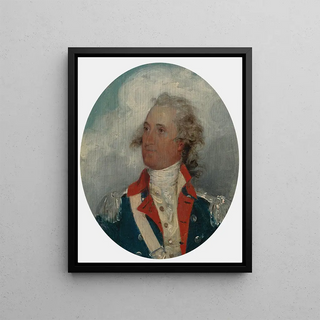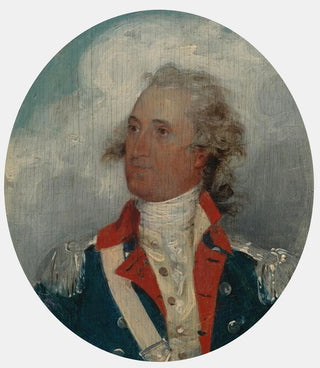Art print | Thomas Pinckney - John Trumbull


View from behind

Frame (optional)
In the vast panorama of American art history, the "Thomas Pinckney" art print by John Trumbull stands out for its elegance and historical depth. This painting, which captures a key moment in American political life, immerses us in the tumultuous atmosphere of the late 18th century. Through the portrait of Thomas Pinckney, diplomat and politician, Trumbull succeeds in immortalizing not only an iconic figure but also the spirit of a nation in full development. This artwork, a true reflection of the ideals of the era, invites us to explore the subtleties of a changing world, while highlighting the personalities that shaped the history of the United States.
Style and uniqueness of the piece
Trumbull's work is characterized by a neoclassical style, where the rigor of lines and clarity of forms combine with a palette of delicate colors. In the "Thomas Pinckney" art print, the artist uses shadows and lights to create an atmosphere that is both solemn and intimate. The viewer's gaze is immediately drawn to the face of the central figure, whose thoughtful expression evokes both determination and wisdom. The detailed clothing, carefully rendered, testifies to a concern for realism that is a hallmark of Trumbull. Every element, from the draping of the robe to the texture of the hair, helps bring this portrait to life, making the piece a true window into the past.
The artist and his influence
John Trumbull, often considered the official painter of the American Revolution, captured the essence of the significant events of his time. Trained in European painting, he integrated classical influences into his work while remaining deeply rooted in American reality. His commitment to historical representation and his desire to transmit a cultural legacy make him an essential figure in American art. Trumbull not only left an indelible mark through his works but also played a crucial role in promoting art as a vehicle of collective memory. His influence is still felt today, as contemporary artists continue to explore themes of identity and history through their creations.

Matte finish

View from behind

Frame (optional)
In the vast panorama of American art history, the "Thomas Pinckney" art print by John Trumbull stands out for its elegance and historical depth. This painting, which captures a key moment in American political life, immerses us in the tumultuous atmosphere of the late 18th century. Through the portrait of Thomas Pinckney, diplomat and politician, Trumbull succeeds in immortalizing not only an iconic figure but also the spirit of a nation in full development. This artwork, a true reflection of the ideals of the era, invites us to explore the subtleties of a changing world, while highlighting the personalities that shaped the history of the United States.
Style and uniqueness of the piece
Trumbull's work is characterized by a neoclassical style, where the rigor of lines and clarity of forms combine with a palette of delicate colors. In the "Thomas Pinckney" art print, the artist uses shadows and lights to create an atmosphere that is both solemn and intimate. The viewer's gaze is immediately drawn to the face of the central figure, whose thoughtful expression evokes both determination and wisdom. The detailed clothing, carefully rendered, testifies to a concern for realism that is a hallmark of Trumbull. Every element, from the draping of the robe to the texture of the hair, helps bring this portrait to life, making the piece a true window into the past.
The artist and his influence
John Trumbull, often considered the official painter of the American Revolution, captured the essence of the significant events of his time. Trained in European painting, he integrated classical influences into his work while remaining deeply rooted in American reality. His commitment to historical representation and his desire to transmit a cultural legacy make him an essential figure in American art. Trumbull not only left an indelible mark through his works but also played a crucial role in promoting art as a vehicle of collective memory. His influence is still felt today, as contemporary artists continue to explore themes of identity and history through their creations.






